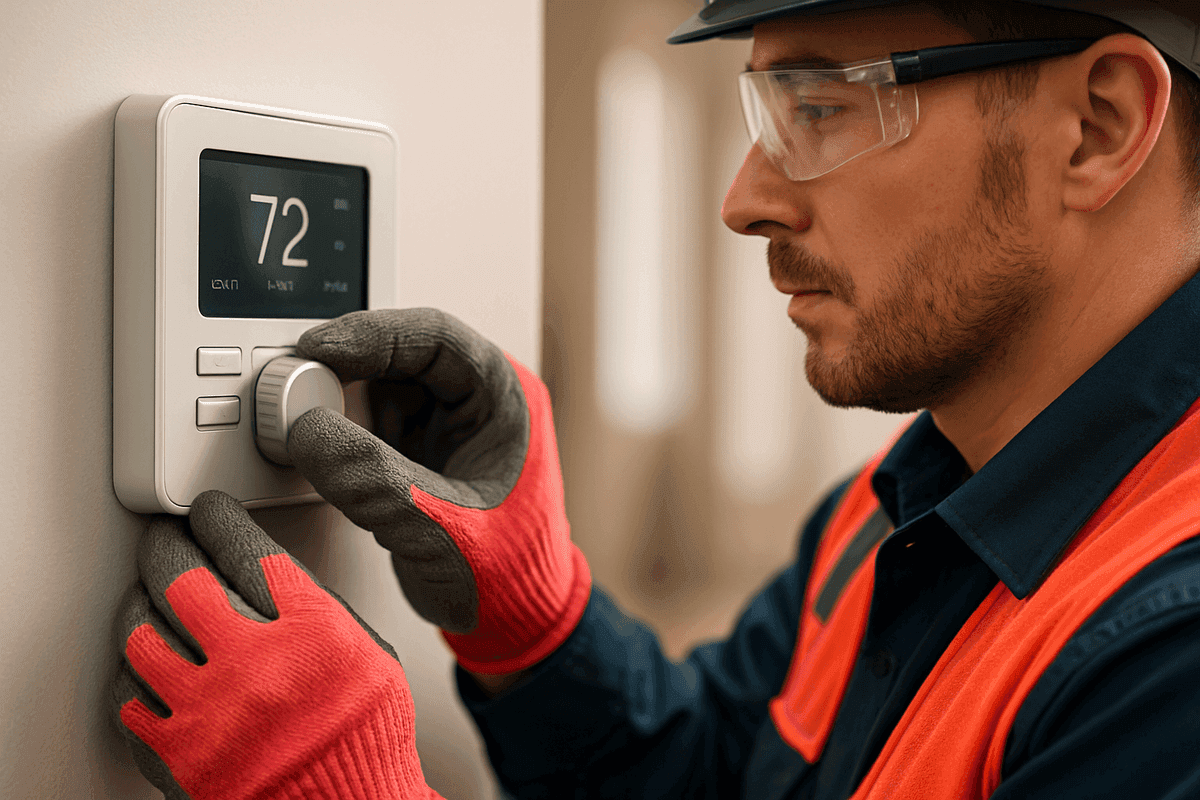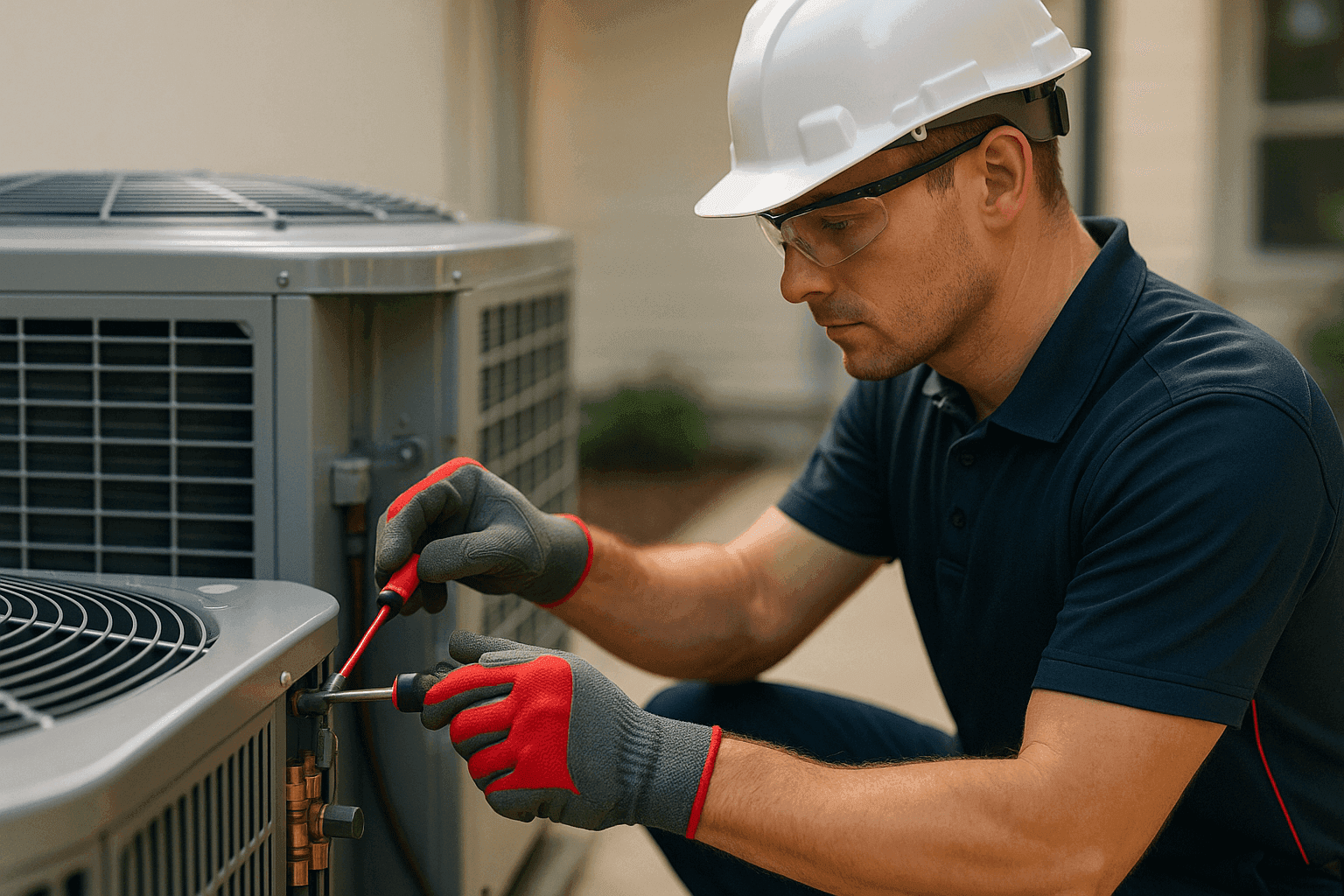Emergency HVAC Help, Anytime You Need It
Your home should feel safe and comfortable. That’s tough when the AC quits on a summer night, or the furnace goes silent in winter’s chill. We’re here—no waiting, no runaround—ready to step in and make things right.
From blocked ducts to failing thermostats, our team handles any HVAC emergency. We arrive with a plan, not just a toolbox. We treat your home as carefully as our own, showing ID and walking you through each fix so you’re never left in the dark.
You’ll talk to a real human when you call, every time. No endless hold music. No surprise costs. Just honest answers and a clear path forward—because every minute matters when comfort and safety are on the line.
Speak with a 24/7 HVAC specialist now 888-805-8278What Sets General Heating & Air Apart
- Fast Response, Day or Night:We’re awake and working when most lights are off. Whether it’s a furnace in January or a leaking AC in July, you’ll reach a trained dispatcher and get a clear window—so you’re not left guessing.
- Certified Technicians, Real Accountability:Our technicians are background-checked, licensed, and insured. We respect your time and property, explain the work in plain language, and keep you in control from start to finish.
- All Systems, All Brands:No matter what brand you have, or how complex the problem, we’re ready. From smart thermostats to mini-splits and full ductwork, our team stays trained on repairs, diagnostics, and modern upgrades.
- Clear Pricing, No Guesswork:You get honest pricing before work begins. No pushy upsells or last-minute add-ons—just straightforward solutions that fit your budget and keep your family comfortable.

Your Home’s Air, Balanced and Safe
Air isn’t just air. It’s what your family breathes, what keeps you healthy, and what can make or break a good night’s sleep. We tune every system—from air scrubbers to humidity control—for reliable, lasting comfort.
Whether you’re facing allergy triggers or stubborn cold spots, we have proven ways to clean, test, and balance your air. Indoor safety and comfort shouldn’t be a gamble. Our team makes sure it never is—day or night.
Call for fast HVAC help: 888-805-8278Round-the-Clock HVAC & Air Quality Services
- 24/7 Emergency HVAC Repair:Day or night, our licensed techs handle broken furnaces, AC units, and urgent air system failures—restoring comfort quickly with clear pricing and reliable care.
- Heating & Furnace Services:From winter repairs to precision installations and seasonal maintenance, we keep your furnace, radiant heat, or mini-split system running safely and efficiently year-round.
- Air Conditioning Solutions:AC repairs, system replacements, tune-ups, and new installations—our experts troubleshoot and optimize cooling to handle summer’s worst with speedy, skillful service.
- Indoor Air Quality Testing & Upgrades:We improve what you breathe. This includes air quality testing, filtration, air scrubbers, energy audits, and balancing—targeting allergens, odors, and airborne concerns.
- Ventilation, Duct, & Sheet Metal Work:Fresh air matters. We clean ducts, balance airflow, install hoods, exhausts, and custom sheet metal to create well-ventilated, healthy spaces for families and businesses.
- Humidity Control Solutions:Keep every room comfortable in every season. We install, repair, and maintain dehumidifiers and humidifiers so dry winters and sticky summers stay outside, where they belong.
- Thermostats & Smart Controls:Upgrade to precision comfort with digital and smart thermostats. We install and troubleshoot all brands, making it easy to control your home’s temperature from anywhere.
- Generators & Backup Power:Protect your home from outages. Our technicians install and maintain standby generators, providing seamless backup for your heating, cooling, and essential appliances.
